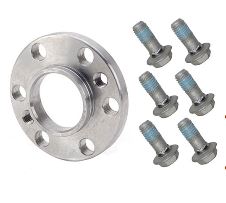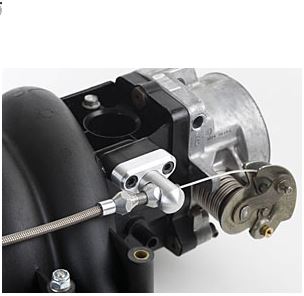Are you considering doing the LS swap? It takes a lot of work to do it right, but it’s incredibly rewarding. I’ve done this swap and there are really two important parts to the game plan. The first is to make sure that you have a game plan for all of the challenge areas. Deciding what to do about the transmission can be one of the most challenging aspects.
That’s where this guide comes in. You’ll see each area of opportunity. Once you have figured you’ll be one step closer to completing your swap. If you have a vehicle that this has been done to a lot you’ll have no problem here.
You’ll want to look at every The great news is that it is on the internet for you to take and use. If you Why do the swap?
- Reliability– The LS Series of engines are bulletproof. You’ll see guys throw insane turbos into the basic 5.3 truck engine and dip into the 10’s.
- Power– The LR4 4.8L truck engine is the smallest of the Vortec series of engines. It makes almost 300 horsepower at the rear wheels of a pickup truck. This power is low in the throttle curve and is extremely street-able. The big block Chevy’s or LT-1’s of yesteryear depended almost entirely on camshaft to achieve the power that the engineers were after. Today, the Gen IV LS engines have heads that outflow anything that came before them.
- Tuning- No more messing with Jetting a carb, or getting the timing curve just right.
But, what about the transmission? People often neglect this when they consider what kind of engine they are going to use.
Common transmission choices for the LS swap
For the purposes of this guide, we will stick with the concept of adapting GM transmissions with the LS Series of engines. There certainly are ways of going about adapting these engines to a foreign drivetrain though, so don’t lose heart.
4L60E– These transmission were standard behind most of the Vortec truck motors. This transmission will be great with your swap since it is what these motors were meant to work with. Make sure that if you buy it separate from the engine that you know for sure that you have an automatic wiring harness. If you have a manual harness most shops don’t like reworking them into automatic harnesses. You’ll have a bad time trying to get someone to do this for you.
The 4L60E has been around a lot longer than the LS motors, so try and find one that goes with your year motor. I recommend getting the transmission from the same pullout that you found the engine in. This will make it a thousand times easier. Here is a video worth watching if you are going to try and buy one that did not come with the engine. It really goes into identifying them properly. There are a lot of ins and outs.
4L80E – This transmission is pretty much the same at the 4L60E above. As the TH400 is to the TH350, this transmission is the heavy duty equivalent here. If you get one at a good price, you’ll have an incredibly bulletproof transmission that’ll handle almost anything that you can throw at it. Here is the catch, it has a larger case. Many older muscle cars will need to have transmission tunnel modifications done in order to accommodate the larger case. Keep that in mind. I have a Nova, and didn’t want to mess with that.
T56 Transmission– These came behind many LS Series cars. You’ll find them in the 4’th generation F-body twins, CTS-V Caddilac, and Pontiac GTO. These are all useful behind the LS motors, although you’ll more than likely want to relocate the shifter. This is espescially true when it comes to the CTS, which has a linkage system instead of the shifter directly on top.
You’ll really want to avoid the Corvette T56. Most people reading this will understand that the Corvette T56 is attached to a transaxle and not really the same transmission at all. I am mentioning this because they go pretty cheap in the salvage community because they can only really be used on the Corvette. It is 100% not worth it.
Also, avoid the T56 that came behind the LT1 engine. The geometry is entirely different than it’s LS counterpart. It is basically incompatible. I’ve seen people change the input shaft and make it work. If that sounds like something that you can do you can do than don’t let my words slow you down. For everyone else just avoid it.
It is also worth noting that this transmission is HUGE. It’s not going into a muscle car without a fight. It is a monster. It does bolt right up
Tremec TKO/Muncie– Bolting these transmissions up to an LS series engine is not straightforward, but has it’s benefits. GM did everyone a huge favor by keeping the same bolt pattern. This makes it technically possible to bolt these transmissions together, otherwise this wouldn’t be an option for your LS engine swap. In the classic car community this pretty much makes it as good as done. You will run into a couple of issues with this.
The first is geometry issues. The distance between the flywheel and throwout bearing is different. So you’ll either need to get a special flywheel( McLeod sells on), or you can use a one off truck flywheel that GM made. It seems to work. Check out this video and see if it is for you. These guys are great.
You’ll also need to have all of the transmission codes deleted from the ECU if you use a Muncie.
There are few good reasons to consider this. The first would be clearance. The Muncie is significantly smaller than a T56. The difference is insane. The TKO is quite a bit smaller itself. The second would be cost. If you have a perfectly good Muncie sitting in the car maybe you have no desire to run an overdrive transmission. There’s nothing wrong with that!
700R4/2004R twins– If you own a GM car from the 80’s you may still have a good 700R4 sitting in there. As far as gearing goes they are identical. The cases are a similar size as well. You’ll need a flexplate adapter. They go for under $40 at Amazon.

You’ll also need something to attach the TV cable to. If you have a manual throttle body intake( drive by throttle cable, not electronic) you’ll need something to connect your TV cable to the throttle blades.

Now, if you have an electronic throttle body you are not stuck up the creek, but your way forward may involve a little fabrication. There is no moving mechanism outside of the electronic throttle body, so the only place you have to get that movement from is the actual gas pedal.
There isn’t an aftermarket solution to this issue, so you’ll have to do a little fabrication. Check out this forum entry.
http://www.thirdgen.org/forums/transmissions-drivetrain/687228-700r4-tv-cable-mounted.html
If you aren’t afraid of fabrication, than you’ll just need to get a bracket on the pedal.
TH400/TH350/Powerglide– These transmissions will bolt to the LS1 engine with the same flexplate adapter you’d use for the 700R4( see above). You’ll also need to adapt something for the kickdown cable as well. There are vacuum ports on the intake for the TH350.
Picking a motor
The LS engines have been around for almost 20 years now (crazy right). That’s good news for the everyman who wants cheap and reliable horsepower. You can now get a 10 year old truck engine from the salvage yard for for well under a thousand dollars. The thing with getting one from the salvage yard is that they don’t really adjust the price much based on mileage, so take your time and find one with less than 100k miles.
Make sure that you understand the difference between a Gen III and Gen IV LS motors. There’s a big difference when it comes to the difficulty of the swap. The Gen IV blocks have displacement on demand, which lets the motor run on only four cylinders when it is not under a heavy load.
It is much easier to deal with the Gen III motor. These motors include:
- LM7– 5.3L truck motor, which was produced between 1999 and 2007. It was rated at right around 300 horsepower except for the first year. It switched to electronic throttle control in the middle of production, so that’s something that you’ll have to consider. If you go with one that has an electric throttle body, make sure you get the throttle pedal with the engine, so you don’t have to find one later. The blocks are made of iron. Beware that you aren’t picking up an LR4. They look identical on the outside. Use the glove compartment tag to verify if the engine is still in the vehicle.
- LS1– This engine came in the Camaro and Corvette in the late nineties and early 00’s. These are the easiest motors to swap into an early muscle car. They are already drive by cable, and the accessories are kept close to the engines. The closer the accessories are to the engine, the more wiggle room you’ll have when it comes to how to engine placement. This engine is made out of aluminum. To get an engine and transmission together, you’ll be looking at spending over $3000. These combos hold their value incredibly well. The Camaro pull out is the more desirable, because the Vette used a Transaxle.
